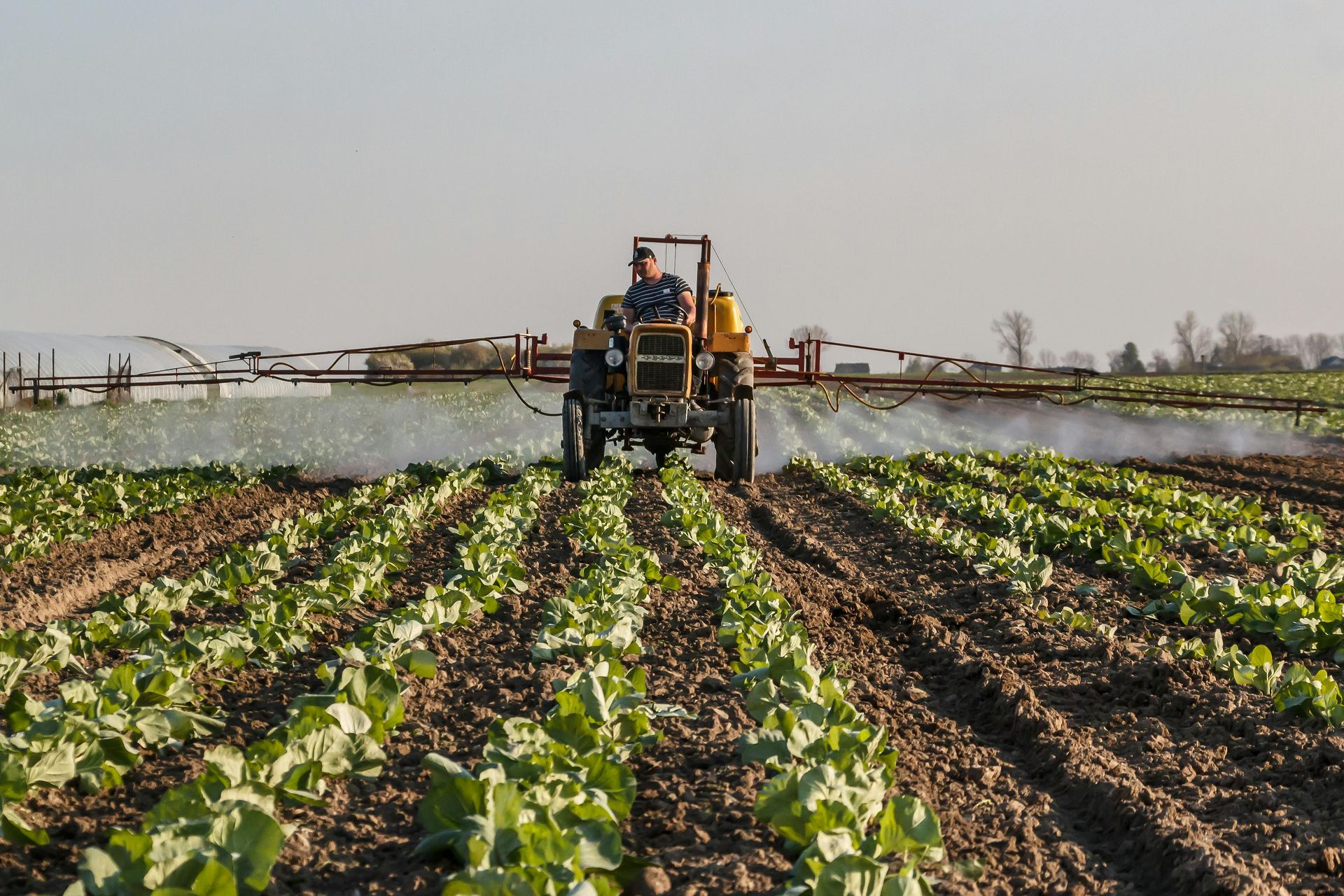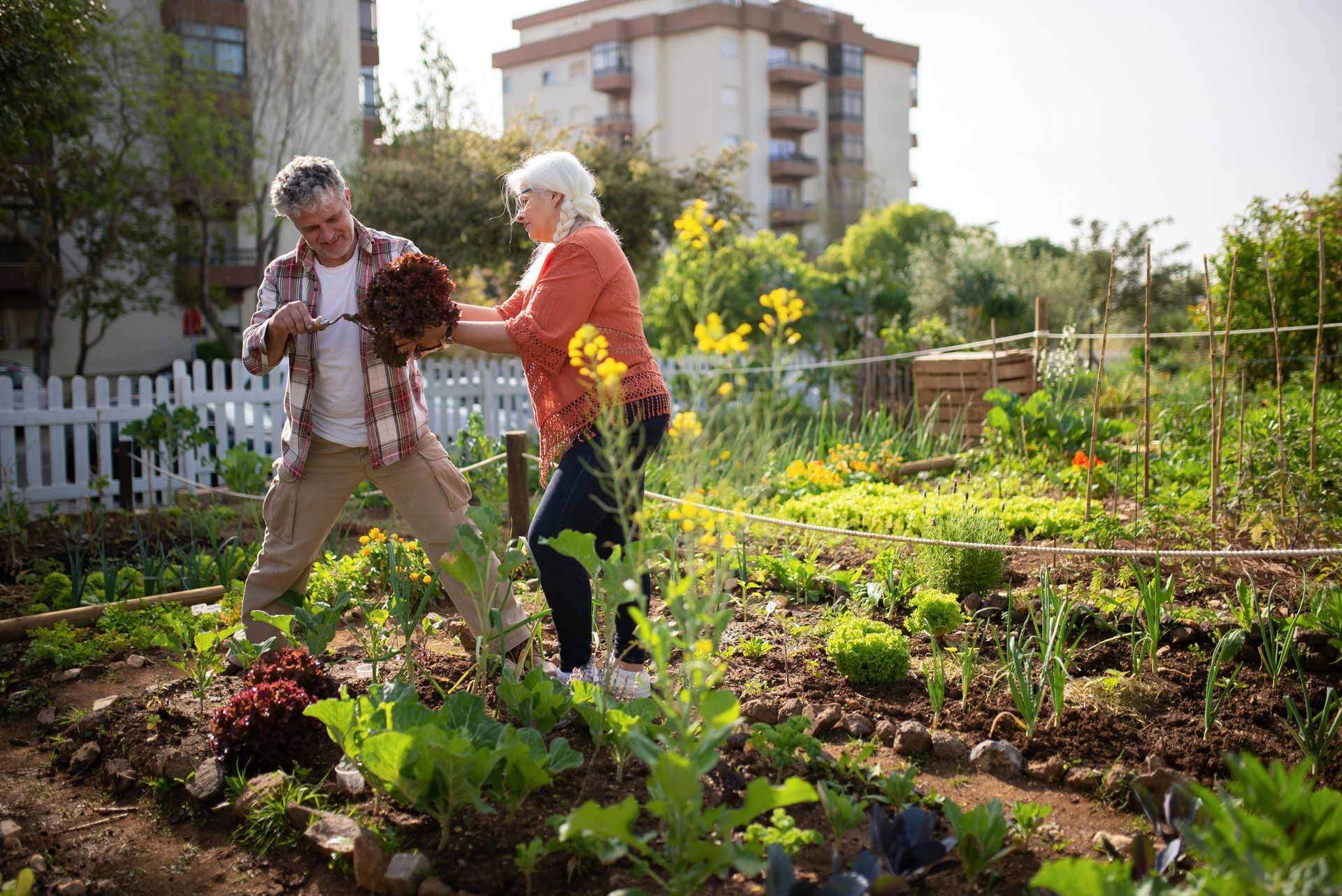Avoid Soil Health Disasters
Managing Plant Stress Is the Key to Keeping Plants Healthy & Managing THC Levels

By Noel Garcia, CCA, Joe Pedroza & Larry Zibilske, PhD
Hemp growers, like most farmers, have one goal in mind: produce crops with high yields and quality. However, of all crops, hemp alone has the unique statutory constraint that THC, one of the naturally produced cannabinoid oils, must not exceed 0.3 percent. Most growers are now painfully aware that a potency test showing a THC level higher than the federal limit will mean the total loss of their crops, and, in the worst case, they will be classified as negligent growers. For oil crops, it can be a real balancing act to achieve the highest content of CBD while limiting THC to acceptable levels. However, as fatal as a high THC result is, growers are learning that other factors can lead to a failed crop.
Plant stress is a condition that can be challenging to understand for many growers. Marijuana growers discovered that if they stress their plants in the last few weeks before harvest, they can induce higher production of THC. But stress in industrial hemp can lead to disaster.
What happens if the plant is stressed early in the vegetative state and how does that affect overall yield? Potential growers have asked, “Isn’t hemp basically a weed and shouldn’t it grow well unattended?” The answer is yes, but not as a commercial crop. Between heat, drought and low humidity, Texas and other arid states can provide plant stress challenges to producing a harvestable crop. So let’s review the experiences two Texas growers had this year.
(Background: Texas growers started under a handicap: Licenses didn’t start being issued until the middle of April — then already more than a month late for planting — and they weren’t issued immediately upon application. Accordingly, growers were in a panic to get their crops going.)
It’s late June and the weather is hot and humid — typical conditions for the Lower Rio Grande Valley region of Texas for the time of year. A new greenhouse grower, excited to invest in a new and promising crop, sets out to start his grow. He starts with topsoil purchased from a local supplier; it’s a sandy loam that he blends with coconut coir and perlite.
The seeds germinate, and for the next several weeks the plants are growing well. One morning as he walks through the rows of potted plants, he notices many of the young plants are beginning to flower. The plants are only five weeks old and 6 to 8 inches tall. They are not an auto-flowering variety. What’s going on?
Another grower in Texas is preparing to plant his first crop. He has 7 acres but decides that it would be wise to start with one. It’s a new operation and he hasn’t fully established the drip irrigation system, which he decided to self-install. It’s getting late in the season, so he direct-seeds before it gets any later. The seeds germinate and everything looks great.
He has close to 2,000 plants in neat rows, stretching out in the hot Texas sun. Things are going smoothly, but it’s August now, and the temperatures are starting to tick higher and higher. For two weeks, temperatures went over 100º and the plants began to show signs of stress. Insects soon moved in and made the situation worse. As the grower walks his field, he notices his plants, now five weeks old, are starting to flower, but they are not an auto-flowering variety. What’s going on?
First, let us understand the mechanisms that trigger a plant to switch to its reproductive (flowering) stage. Flowering is initiated either autonomously or by environmental factors. Photoperiodic flowering is controlled by the amount of light and dark hours. With photoperiod strains of cannabis, plants switch from the vegetative to the flowering phase when they get longer than 12 hours of dark. By contrast, auto-flowering strains are not dependant on light or dark hours and are genetically programmed to begin flowering when they’re 4-5 weeks old.
Other crops show similar characteristics. Olives, for example, are controlled by vernalization: they must have a minimum number of cold hours to initiate flowering. So is that what happened to our Texas hemp growers? Was it so late in the year that the plants got enough hours of darkness to initiate flowering? In these cases, the answer was no. Let’s look at each situation separately and analyze what went wrong.
In the first grower’s case, the lab analyzed the media and the well water he used to irrigate. A comprehensive analysis showed that the media-mix the grower purchased was mostly inert and devoid of nutrients (and life). The pH was high at 8.3 and highly calcareous with 1,200 ppm of calcium as carbonate.
Additionally, even though coconut coir was added, it did not contribute to the active organic matter as it had not been composed. So, active organic matter measured only 0.52 percent. The well water tested high in dissolved solids at 1,155 mg/L — mostly sodium and chloride. Notable too, was an elevated boron level of 1.8 mg/L, which can occur naturally in wells deeper than 100 ft. After talking with the grower and discovering how he was fertilizing and irrigating his plants, we understood how stresses had built-up.
He explained that he did not feed for the first 3-4 weeks of growth and had only been watering the plants using a backpack sprayer. He wanted to avoid root rot from overwatering, so he only watered every two or three days. The media in the pots, composed mostly of sandy soil, would become hard and compacted when it dried. The minerals from the water began to build-up in the media, to the point where it had become white and crusty.
The outcome was the plants had experienced chronic stress from underwatering, lack of nutrients and accumulated sodium and boron that was reaching toxic levels as evidenced by a plant sap test that indicated 230 ppm of boron. The response from the plant was one of survival and to reproduce. As Dr. Ian Malcom said in his famous Jurassic Park line, “life finds a way.” The instinct for survival and reproduction is what drives all life on earth. In the case of our young cannabis plants, the response was to flower.
When we reviewed the conditions of the second grower, we found a different pattern of problems. Our soil analysis showed that nutrient levels were mostly adequate except nitrogen, which was excessively high at 290 lbs/ac. As the plants grew, the excessive nitrogen stimulated rapid growth, leading to a weakened cell structure, making the plants susceptible to insect attacks.
The grower was not experienced in designing irrigation systems, resulting in built-in watering issues — so many of the plants were exposed to drought conditions during a heat wave that affected the region. The slope of the field led to overwatering at the bottom and underwatering at the top. He did not consider that static water pressure increases with every foot of elevation by 0.433 psi — so he started off with a considerable static pressure differential along the vertical length of the lines: highest at the bottom — lowest at the top.
Under the stresses of heat, unbalanced nutrition, insect pressures and uneven water distribution, the young plants’ instinct for survival triggered a flowering/reproductive response in the less than 100 surviving plants.
So what should these growers have done differently to avoid such losses?
No matter the crop, planning and preparation are essential to success. Industrial hemp, in particular, requires very much advance research and planning. There is no better protection against the variables that Mother Nature inflicts to test growers than to have a detailed plan and prepare for your crop’s success — and avoid potential problems.
It can seem like a daunting task with so many factors at play, especially since many think it is beyond their control. And rightfully so, as we frequently hear about storms that hit with little warning and destroy large areas of farmland, and heat waves and droughts that cripple parts of the farming community.
How can we prepare for these challenges?
The answer is hidden beneath our feet. Understanding soil health is the cornerstone of every successful grower. The foundation of your plan should be the rebuilding of your soil and its life, and management of its nutrients and structure.
Soil health is an idea that involves optimizing the relationships between soil physical, chemical and biological factors. Achieving and maintaining good soil health is essential for producing good crop yields and quality. Fertilizers are only part of soil fertility. Soil microbes live on and around plant roots and interact with roots in several important ways. Among the most important interactions are ensuring plant roots are protected from pathogenic microbes and assisting the uptake of nutrients into the plants. But healthy soil also includes beneficial nematodes, insects, earthworms and fungi — all interacting with each other and the microbes in concert.
Maintaining balanced nutrition and vigorous soil life at every stage of your plants’ life cycles will ensure that no matter what challenge Mother Nature sends, your crops will have the best chance of making you money.
Soil or growing media testing is one of the best investments a grower can make, especially when planning a new season. As we saw with our Texas growers, soil lacking in nutrients or having excess nutrients, devoid of life, or being extremely acid or alkaline, all lead to plant nutrient uptake problems — which invariably results in stress.
Irrigation water analysis is also paramount when installing your farm’s infrastructure. Poor quality water can neutralize the efficacy of nutrients and treatments, affect distribution by plugging emitters when using drip irrigation and change the soil’s native chemistry.
These tools will help you understand where you need to focus your energy and resources. The goal is to provide the best possible environment for your plants to grow. When we correct our soil’s nutritional imbalances, we facilitate maintaining adequate levels of nutrients in our plants as they develop.
As the plant grows, its nutritional needs change and meeting those needs will greatly reduce the harmful stresses that prevent the plant from reaching its maximum genetic potential — and limit the production of THC. Simultaneously, we reduce the need for insecticides and other harsh treatments that reduce overall profit. In the case of conventional growers, we also reduce the exposure to strong chemicals and toxic treatments.
Additionally, it is essential to learn from those who have experience in growing crops — and industrial hemp, in particular. We are still learning about the stresses that affect hemp and the differences between geographical/climatic regions. Add to that the regulatory standards and market requirements that must be met to harvest a profitable crop and one quickly realizes that industrial hemp is one of the most challenging crops to produce.
We encourage you to reach out to experienced industrial hemp (not marijuana) growers and consultants willing to council you about your plans and goals. Plan and prepare for a successful crop by learning what your soil needs to be healthy and what you need to restore that health.
Include soil microbes and organic matter in your plan and you will ensure vital relationships are maintained in the plant root environment for the entire season … and beyond.
All crops, including hemp, benefit from healthy, living soil. It is the greatest asset we have. It is our obligation to be the stewards who restore the rich farmlands that once were the pride of our forefathers.
This article was done in partnership with Acres U.S.A. and is published in the December 2020 Acres U.S.A. magazine. Noel Garcia is a certified crop advisor and is chief operating officer and senior technical consultant at TPS Lab. Joe Pedroza is a Texas-licensed hemp sampler and is business development manager at TPS Lab. Dr. Larry Zibilske is vice president of research at TPS Lab.



